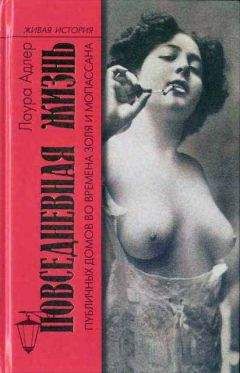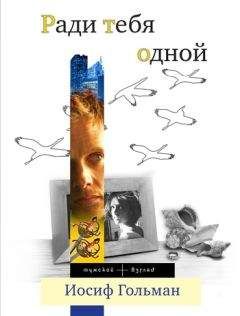Н Пигулевская - Культура сирийцев в средние века
In the second section of Chapter 1, the author gives a circumstantial analysis of the Syrians' achievements in philology, philosophy, medicine, geography, cosmogony, alchemistry and agronomy. This is supplemented by portraits of a number of prominent Syrian men of learning: Bar Daisan, a scholar, philosopher and poet; Afrahat the Persian Sage, an exegetist and philologist; Ephraim the Syrian, a poet of great talent who {246} exerted a profound influence on the subsequent development of Christian literature; Sergius of Resh'aina, a physician reknowned for his extensive theoretical knowledge and practical activities. The author focuses especially on the Syrians' accomplishments in the field of translation, as a result of which links were established between the learning of ancient classical Greece and medieval Arabic, Indian and Iranian learning, and then, through the medium of the Arabs, with learning in Western Europe.
Chapter 2, "The Empire. Iran and the Syrians", analyses in detail the spread of Syrian culture in the Middle East and its. interaction with the Greek and Iranian cultures, an interaction resulting from the economic and political position of northern Mesopotamia and the active role the Syrians played in political life and international trade. N. V. Pigulevskaya's prime concern is ideology, namely, the political causes underlying the spread of two different trends of Christianity - the Nestorian and the Monophysite. Christianity became the official religion of northern Mesopotamia at a rather early period, hence the area's important role in the dissemination of the new faith. The author dwells upon the origins of Syrian Christianity, which is usually linked with the activities of the Apostles Addai and Thomas. The tradition tracing it to Addai was older and more deeply rooted, and as such it was mentioned in such Syrian literary compositions as The Doctrine of 'Addai and The Acts of St Mari, Apostle of the Orient. The latter apocryphal text mentions the evangelisation of a number of Iranian provinces as part of the Apostles' activities. N. V. Pigulevskaya also analyses the early Syrian martyria: The Acts of Sharbil and Barsamya, which describe the actual situation in the area in the 3rd-4th centuries and are of interest to the historian of Syrian literature and culture, of the time. Discussed in this context is also a late 4th-century Acts of the three martyrs from Edessa - Gurya, Shemona and Habib.
As Christianity took firm root in Osrhoene, a region of ancient cultural traditions, this encouraged the spread of the new religion to Iran. Another contributing factor to this process was the political opposition of the Byzantine Empire and Iran. For some time, Christianity did not make much of an impact in Iran, and persecution of the Christians only began in the wake of the militant religious policy started by the Sasanids. N. V. Pigulevskaya's detailed analysis of the history and causes of the persecution of Iranian Christians is corroborated by the hagiographic cycle devoted to the martyrs of the "great persecution". The author concludes that the anti-Christian action was induced by the ideological affinity of Iranian Christians {247} with Byzantium, on the one hand, and by the opportunities to seize the property of the executed Christian Syrians, who belonged to the urban communities of traders and craftsmen. Yet, despite persecution, Christian communities in Iran, dominated as they were by the Syrians, continued to exist and develop: a hierarchic structure came into being, Christian writings in the Syrian language gained currency, and even the dogmas underwent certain revision. In the 5th century, the Christian Church in Iran was remodeled after the Byzantine; it recognised the Nicene Creed and elected, with the approval ans of the Shahanshah, a Catholicos as its head.
Thanks to the mediation of Syrian Christians, who were well endowed to carry out political missions, diplomatic relations were gradually established between Iran and Byzantium. N. V. Pigulevskaya closely follows the ideological conflicts within the Syrian-Persian Church in the 5th century, which reflected the current social and political struggle, and offers vivid character sketches of the participants in those dogmatic disputes. Thus, she examines the activities of Bar Sauma, who favoured Nestorianism and was therefore sharply anti-Monophysite. There is an account of the Nestorian Patriarch mar Abha I, a prominent representative of Syrian culture, as well as descriptions of such men as Ishoyahbh I, Sabhrisho, Ishoyahbh III, and Henanisho I.
The monograph discusses the relationship between the Christian Syrians and the Arabs who conquered Sasanian Iran in the early 7th century. A special section of the chapter is devoted to such Monophysite leaders as Simeon, the bishop of Beth-Arsham, and mar Ahudhemmeh, and especially to Jacob Burde'ana, after whom the Syrian Monophysites came to be known as Jacobites. The Jacobites produced many a noted historian - Joshua the Stylite and John of Ephesus; eminent writers, including Jacob of Serugh; many philosophers, astronomers and physicians. The rivalry between the Nestorians and the Monophysites induced the Syrian Christians to engage in unending proselytising in the Middle East, and it is to both groups - the Nestorians and the Monophysites - that Syrian culture owes its high standards. {248}
1 Эта работа была написана еще в 30-х годах, но опубликована значительно позже. Н. В. Пигулевская. Каталог сирийских рукописей Ленинграда. - ПС, 1960, № 6, (69).
* В фигурные скобки {} здесь помещены номера страниц (окончания) издания-оригинала - Ю. Ш.
2 Н. В. Пигулевская. Сирийские источники по истории народов СССР. ТИВАН. ХLI, 1941.
3 Н. В. Пигулевская. Месопотамия на рубеже V и VI вв. Сирийская хроника Иешу Стилита как исторический источник. - ТИВАН. XXXI, 1940.
4 Н. В. Пигулевская. Византия и Иран на рубеже VI и VII вв. ТИВАН. ХLVI, 1946.
5 Н. В. Пигулевская. Византия на путях в Индию. Из истории торговли Византии с Востоком в IV-VI веках. М.-Л., 1951.
6 История Мар Ябалахи III и Раббан Саумы. Исследование, перевод с сирийского и примечания Н. В. Пигулевской. М., 1958.
7 Н. В. Пигулевская. Города Ирана в раннем средневековье. М.-Л., 1956.
8 Н. В. Пигулевская. Арабы у границ Византии и Ирана в IV- VI вв. М.-Л., 1964.
9 Тюркологический сборник. М. 1966, с. 228-232.
1 М. Cohen. La grande invention de lecriture et son evolution. T. 1-3. Р., 1958. Т. 1, с. 97, 113, 118, 143.
2 Там же, с. 158-159.
3 J. Pirenne. Aux origines de la graphie syriaque. - "Syria". T. 40, fasc. 1-2, 1963, с. 115-119, 131, 136.
4 Ch. С. Torrey. А Syriac Parchment from Edessa in the year 243 A. D.ZS. Bd 10, 1935, с. 33-45; A. R. Bellinger, С. В. Welles. A Third century contract of sale from Edessa in Osrhoene.- YCS. Vol. 5, 1935, с. 93-154.
5 W. Wright. Catalogue of the Syriac manuscripts in the British Museum. P. 1-3. Oxford, 1870-1872, Add. 12150 (далее: Wright. Catalogue.); H. Пигулевская. Каталог сирийских рукописей Ленинграда.- ПС, вып. 6 (69). Л., 1960, с. 95 (далее: Пигулевская. Каталог).
6 W. Cureton. Spicilegium Syriacum, containing remains of Bardesan, Meliton, Ambrose and Mara bar Serapion, now first ed. with an Engl. transl. and notes by W. Cureton, text Syr. L., 1855, с. 43-48; Fr. Schulthess. Der Brief des Mara bar Serapion.- ZDMG. Bd 51, 1897, с. 365- 391; А. Baumstark. Geschichte der syrischen Literatur, mit Ausschluss der christlich-palastinensischen Texte von Dr. Anton Baumstark. Bonn, 1922, с. 10 (далее: Baumstark. Geschichte).
7 The story of Ahikar from the Syriac, Arabic, Armenian, Ethiopic, Greek and Slavonic versions by P. G. Conybeare, J. Rendel Harris and А. Smith Lewis. L., 1898; 2nd ed. enlarged and corr., 1914, с. 99-127.
8 Baumstark. Geschichte, с. 11.
9 Th. Noldeke. Untersuchungen zum Achiqarroman. В., (913.- AbhKGWG Phil.-hist. Кl., N. F. Bd 14, Nr. 4.
10 F. Nau. Histoires dAhudemmeh et de Maruta. - PO. Vol. 3, fasc. 1, 1905, с. 65-66 (далее: Histoires dAhudemmeh et de Maruta).
11 Baumstark. Geschichte, c. 212.
12 Bar'Arabaia. La seconde partie de lHistoire ecclesiastique. Texte syriaque ed. et trad. par F. Nau.-PO. Vol. 9, fasc. 5, 1913, с. 493-678 (далее: Bar Histoire).
13 Histoire de mar Jabalaha, de trois autres patriarches, dun pretre et de deux laiques nestoriens, textes syriaques, ed. par P. Bedjan. Р., 1895, с. 416 (далее: Histoire de mar Jabalaha).
14 The Book of governors; the Historia monastica of Thomas Bishop of Marga A. D. 840. Ed. from Syriac manuscripts in the British Museum and other Libraries by Е. A. W. Budge. T. 1: The Syriac text, introduction etc. T. 2. The English translation. L., 1893. Т. 1, с. 332; t. 2, с. 581 (далее: Thomas Margensis. Historia monastica).
15 Там же. Т. 1, с. 97.
16 Там же. Т. 1, с. 163 (кн. 3, гл. VIII).
17 Е. А. W. Budge. The Histoires of Rabban Hormizd of the Persian and Rabban Bar-'Idta. The Syriac texts ed. with English translation. T. 1-2. L., 1902; Т. 1. Syriac texts, с. 116-117.
18 Там же. Т. 1, с. 117; т. 2, с. 170.
19 Там же. Т. 1, с. 9 (fol.6-b).
20 Histoire de mar Jabalaha, c. 291.
21 J. В. Сhаbоt. Histoire de Jesus-Sabran ecrite par Jesus-yab dAdiabene, publiee dapres le ms. syr. CLXI de la Bibliotheque Vaticane. Nouvelles Archives des Missions scientifiques et litteraires. T. 7, 1897, с. 524- 525.
22 Там же, с. 525.
23 Thomas Margensis. Historia monastica. T. 1, с. 74.
24 Le livre de la chastete, compose par Jesusdenah eveque de Bacrah. MAH (publ. par lEcole francaise de Rome), XVI-e annee. fasc. 4; ParisRome, 1896, с. 47 (далее: Le livre de la chastete).
25 Thomas Margensis. Historia monastica. T. 1, с. 141; t. 2, с. 282.
26 Там же. Т. 1, с. 142.
27 Там же. Т. 1, с. 144; т. 2, с. 237.
28 Еbediеsu. Collectio canonum.- А. Маi. Scriptorum veterum nova collectio. T. 10, р. 1. Romae, 1838, textus syr., c. 274, transl. lat. c. 110 (далее: Ebediеsu. Collectio canonum).
29 Н. Пигулевская. Города Ирана в раннее средневековье. М.- Л., 1956, с. 338-349 - Нисибийская академия (далее: Пигулевская. Города Ирана); N. Pigoulevskaja. Les villes de lEtat Iranien aux epoques Parthe et Sassanide. Р., 1963, с. 244-251 (далее: Pigoulevskaja. Les villes de lEtat Iranien).
30 Gli Statuti della scuola di Nisibi. Ed. I. Guidi - GSAJ. Vol. 4. Roma, 1890, с. 165-195, с. 172 (далее: Gli Statuti della scuola di Nisibi).
31 Там же, с. 171-172.
32 Там же, с. 188.
33 Там же, с. 188-189.
34 Там же, с. 169, 195.
35 Е. Nestle. Die Statuten der Schule von Nisibis aus der Jahren 496 und 590-ZfK. Bd 18. Gotha, 1898, с. 211, 229.
36 Mar Bar'Arabaia eveque de Halwan. Cause de la fondation des ecoles. Publie par Addai Scher.- PO. T. 4, fasc. 4, 1908, с. 319-404 (далее: Fondation des ecoles); BarHistoire, c. 493-675.
37 Е. Т. Hermann. Die Schule von Nisibis vom 5. bis 7. Jahrh. Ihre Quellen und ihre Geschichte. - ZfNW. Bd 25, 1926, с. 103-108 (далее: Hermann. Die Schulevon Nisibis).
38 I. M. Fiey. Lapport de Mgr. Addai Scher a lhagiographie orientale. - AB. T. 83, fasc. 1-2, с. 146-147.
39 Ris baduпереводят по-разному: так, А. Шер считает их "философами", Ф. Но переводит как swveillants - это учителя школы, которые ведут в ней преподавание. Как окончившие ее, они имеют звание бадуки.
40 Synodicon Orientale ou recueil des synodes nestoriens, publ. trad. et annot. par J. B. Chabot.- NEMBN. T. 37, Р., 1902, с. 479 (далее: Synodicon Orientale).
41 Историческая часть трактата была впервые напечатана: Narsai. Homiliae et carmina, ed. ?. Mingana. Т. 1-2. Mausilii, 1905, с. 32 (далее: Narsai. Homiliae et carmina); Fondation des ecoles, c. 327-341.
42 Там же, с. 342.
43 Там же, с. 344.
44 Там же, с. 345.
45 Там же, с. 360.
46 Там же, с. 362.
47 Там же, с. 363.
48 Там же, с. 365.
49 Там же, с. 367-368.
50 Там же, с. 375.
51 Там же, с. 375.
52 Там же, с. 376.
53 Там же, с. 377.
54 Там же, с. 377, 381-382.
55 Там же, с. 378.
56 Там же, с. 382-383.
57 Там же, с. 383.
58 Там же, с. 382.
59 Там же, с.381.
60 Там же, с. 383, 387.
61 Там же, с. 391.
62 Там же, с. 392.
63 Там же, с. 390.
64 Chronicon anonymum de ultimis regibus Persarum, ed. et interpr. est. I. Guidi - CSChO. Scrp. syr. versio, Ser. 3. Т. 4. Lipsiae, 1903, с. 17 (далее: Chronicon anonymum); H. Пигулевская. Анонимная сирийская хроника о времени Сасанидов (Сирийские источники по истории Ирана и Византии). ЗИВАН. Т. 7, 1939, с. 65 (далее: Анонимная хроника).
65 Fondation des ecoles, с. 393.
66 Bar Histoire, с. 493-631; с. 495.
67 Там же, с. 631.
68 Там же, с. 496.
69 Там же, с. 496.
70 Там же, с. 500-501.
71 Там же, с. 598-599.
72 Там же, с. 600.
73 Там же, с. 603.
74 Fondation des ecoles, с. 377.
75 Baumstark. Geschichte, с. 34.
76 I. Lаbоurt. Le christianisme dans lempire Perse sous la dynastie Sassanide. Р., 1904, с. 131 (далее: Labourt. Christianisme).
77 Baumstark. Geschichte, c. 71.
78 Там же, с. 101.
79 Labourt. Christianisme, с. 169, 291. - Н. Пигулевская. Мар Аба I. К истории культуры VI в. н. э. - СВ, 1947, № 5, с. 73-84 (далее: Мар Аба I); N. Pigoulevskaja. Mar Aba I. Une page de lhistoire de la civilisation au VI siecle de lere nouvelle. - Melanges Masse. Teheran, 1963 (далее: Mar Aba I).
80 Maris. Amri et Slibae de patriarchis nestorianorum commentaria, ed. Н. Gismondi. Romae, 1896-1899 (далее: Mari. Amr); здесь: Mari, c. 37, 39; Labourt. Christianisme, c. 149.
81 Labourt. Christianisme, c. 130-152.
82 Baumstark. Geschichte, c. 104, 109
83 Bar Histoire, с. 594-615.
84 Там же, с. 596.
85 Там же.
86 Baumstark. Geschichte, с. 110.
87 Bar Histoire, с. 597.



